- Home
- Carl Sagan
Broca's Brain Page 18
Broca's Brain Read online
Page 18
A year later, by sheerest accident, I stumbled across a magazine called Astounding Science Fiction in the neighborhood candy store. A glance at the cover and a quick riffle through the interior showed me it was what I had been looking for. With some effort I managed to scrape together the purchase price, opened it at random, sat down on a bench not twenty feet from the candy store and read my first modern science-fiction short story, “Pete Can Fix It,” by Raymond F. Jones, a gentle time-travel story of post-nuclear-war holocaust. I knew about the atom bomb—I remember an excited friend explaining to me that it was made of atoms—but this was the first I had seen about the social implications of the development of nuclear weapons. It got you thinking. The little device, though, that Pete the garage mechanic put on automobiles so passers-by might make brief cautionary trips into the wasteland of the future—what was that little device? How was it made? How could you get into the future and then come back? If Raymond F. Jones knew, he wasn’t telling.
I found I was hooked. Each month I eagerly awaited the arrival of Astounding. I read Jules Verne and H. G. Wells, read from cover to cover the first two science-fiction anthologies that I was able to find, made scorecards, similar to those I was fond of making for baseball, on the quality of the stories I read. Many of the stories ranked high in asking interesting questions but low in answering them.
There is still a part of me that is ten years old. But by and large I’m older. My critical faculties and perhaps even my literary tastes have improved. In rereading L. Ron Hubbard’s The End Is Not Yet, which I had first read at age fourteen, I was so amazed at how much worse it was than I had remembered that I seriously considered the possibility that there were two novels of the same name and by the same author but of vastly differing quality. I can no longer manage credulous acceptance as well as I used to. In Larry Niven’s Neutron Star the plot hinges on the astonishing tidal forces exerted by a strong gravitational field. But we are asked to believe that hundreds or thousands of years from now, at a time of casual interstellar spaceflight, such tidal forces have been forgotten. We are asked to believe that the first probe of a neutron star is done by a manned rather than by an unmanned spacecraft. We are asked too much. In a novel of ideas, the ideas have to work.
I had the same kind of disquieting feelings many years earlier on reading Verne’s description that weightlessness on a lunar voyage occurred only at the point in space where the Earth’s and the Moon’s gravitational pulls canceled, and in Wells’s invention of the antigravity mineral cavorite: Why should a vein of cavorite still be on Earth? Shouldn’t it have flung itself into space long ago? In Douglas Trumbull’s technically proficient science-fiction film Silent Running, the trees in vast closed spaceborne ecological systems are dying. After weeks of painstaking study and agonizing searches through botany texts, the solution is found: plants, it turns out, need sunlight. Trumbull’s characters are able to build interplanetary cities but have forgotten the inverse square law. I was willing to overlook the portrayal of the rings of Saturn as pastel-colored gases, but not this.
I have the same trouble with Star Trek, which I know has a wide following and which some thoughtful friends tell me I should view allegorically and not literally. But when astronauts from Earth set down on some fardistant planet and find the human beings there in the midst of a conflict between two nuclear superpowers—which call themselves the Yangs and the Coms, or their phonetic equivalents—the suspension of disbelief crumbles. In a global terrestrial society centuries in the future, the ship’s officers are embarrassingly Anglo-American. Only two of twelve or fifteen interstellar vessels are given non-English names, Kongo and Potemkin. (Potemkin and not Aurora?) And the idea of a successful cross between a “Vulcan” and a terrestrial simply ignores what we know of molecular biology. (As I have remarked elsewhere, such a cross is about as likely as the successful mating of a man and a petunia.) According to Harlan Ellison, even such sedate biological novelties as Mr. Spock’s pointy ears and permanently querulous eyebrows were considered by network executives far too daring; such enormous differences between Vulcans and humans would only confuse the audience, they thought, and a move was made to have all physiologically distinguishing Vulcanian features effaced. I have similar problems with films in which familiar creatures, slightly changed—spiders thirty feet tall—are menacing the cities of the Earth: since insects and arachnids breathe by diffusion, such marauders would asphyxiate before they could savage their first city.
I believe that the same thirst for wonder is inside me that was there when I was ten. But I have learned since then a little bit about how the world is really put together. I find that science fiction has led me to science. I find science more subtle, more intricate and more awesome than much of science fiction. Think of some of the scientific findings of the last few decades: that Mars is covered with ancient dry rivers; that apes can learn languages of many hundreds of words, understand abstract concepts and construct new grammatical usages; that there are particles that pass effortlessly through the entire Earth so that we see as many of them coming up through our feet as down from the sky; that in the constellation Cygnus there is a double star, one of whose components has such a high gravitational acceleration that light cannot escape from it: it may be blazing with radiation on the inside but it is invisible from the outside. In the face of all this, many of the standard ideas of science fiction seem to me to pale by comparison. I see the relative absence of these things and the distortions of scientific thinking often encountered in science fiction as terrible wasted opportunities. Real science is as amenable to exciting and engrossing fiction as fake science, and I think it is important to exploit every opportunity to convey scientific ideas in a civilization which is both based upon science and does almost nothing to ensure that science is understood.
But the best of science fiction remains very good indeed. There are stories so tautly constructed, so rich in accommodating details of an unfamiliar society that they sweep me along before I even have a chance to be critical. Such stories include Robert Heinlein’s The Door into Summer, Alfred Bester’s The Stars My Destination and The Demolished Man, Jack Finney’s Time and Again, Frank Herbert’s Dune and Walter M. Miller’s A Canticle for Leibowitz. You can ruminate over the ideas in these books. Heinlein’s asides on the feasibility and social utility of household robots wear exceedingly well over the years. The insights into terrestrial ecology provided by hypothetical extraterrestrial ecologies as in Dune perform, I think, an important social service. He Who Shrank, by Harry Hasse, presents an entrancing cosmological speculation which is being seriously revived today, the idea of an infinite regress of universes—in which each of our elementary particles is a universe one level down, and in which we are an elementary particle in the next universe up.
A rare few science-fiction novels combine extraordinarily well a deep human sensitivity with a standard science-fiction theme. I am thinking, for example, of Algis Budrys’ Rogue Moon, and of many of the works of Ray Bradbury and Theodore Sturgeon—for example, the latter’s To Here and the Easel, a stunning portrayal of schizophrenia as perceived from the inside, as well as a provocative introduction to Ariosto’s Orlando Furioso.
There was once a subtle science-fiction story by the astronomer Robert S. Richardson on the continuous-creation origin of cosmic rays. Isaac Asimov’s story Breathes There a Man provided a poignant insight into the emotional stress and sense of isolation of some of the best theoretical scientists. Arthur C. Clarke’s The Nine Billion Names of God introduced many Western readers to an intriguing speculation in Oriental religions.
One of the great benefits of science fiction is that it can convey bits and pieces, hints and phrases, of knowledge unknown or inaccessible to the reader. Heinlein’s And He Built a Crooked House was for many readers probably the first introduction they had ever encountered to four-dimensional geometry that held any promise of being comprehensible. One science-fiction work actually presents the mathematics of Einstein’s last att
empt at a unified field theory; another presents an important equation in population genetics. Asimov’s robots were “positronic,” because the positron had recently been discovered. Asimov never provided any explanation of how positrons run robots, but his readers had now heard of positrons. Jack Williamson’s rhodomagnetic robots were run off ruthenium, rhodium and palladium, the next Group VIII metals after iron, nickel and cobalt in the periodic table. An analogue with ferromagnetism was suggested. I suppose that there are science-fiction robots today that are quark-ish or charming and will provide some brief verbal entrée into the excitement of contemporary elementary particle physics. L. Sprague de Camp’s Lest Darkness Fall is an excellent introduction to Rome at the time of the Gothic invasion, and Asimov’s Foundation series, although this is not explained in the books, offers a very useful summary of some of the dynamics of the far-flung imperial Roman Empire. Time-travel stories—for example, the three remarkable efforts by Heinlein, All You Zombies, By His Bootstraps and The Door into Summer—force the reader into contemplations of the nature of causality and the arrow of time. They are books you ponder over as the water is running out of the bathtub or as you walk through the woods in an early winter snowfall.
Another great value of modern science fiction is some of the art forms it elicits. A fuzzy imagining in the mind’s eye of what the surface of another planet might look like is one thing, but examining a meticulous painting of the same scene by Chesley Bonestell in his prime is quite another. The sense of astronomical wonder is splendidly conveyed by the best of such contemporary artists—Don Davis, Jon Lomberg, Rick Sternbach, Robert McCall. And in the verse of Diane Ackerman can be glimpsed the prospect of a mature astronomical poetry, fully conversant with standard science-fiction themes.
Science-fiction ideas are widespread today in somewhat different guises. We have science-fiction writers such as Isaac Asimov and Arthur C. Clarke providing cogent and brilliant summaries in nonfictional form of many aspects of science and society. Some contemporary scientists are introduced to a vaster public by science fiction. For example, in the thoughtful novel The Listeners, by James Gunn, we find the following comment made fifty years from now about my colleague, the astronomer Frank Drake: “Drake! What did he know?” A great deal, it turns out. We also find straight science fiction disguised as fact in a vast proliferation of pseudoscientific writings, belief systems and organizations.
One science-fiction writer, L. Ron Hubbard, has founded a successful cult called Scientology—invented, according to one account, overnight on a bet that he could do as well as Freud, invent a religion and make money from it. Classic science-fiction ideas are now institutionalized in unidentified flying objects and ancient-astronaut belief systems—although I have difficulty not concluding that Stanley Weinbaum (in The Valley of Dreams) did it better, as well as earlier, than Erich von Däniken. R. De Witt Miller in Within the Pyramid manages to anticipate both von Däniken and Velikovsky, and to provide a more coherent hypothesis on the supposed extraterrestrial origin of pyramids than can be found in all the writings on ancient astronauts and pyramidology. In Wine of the Dreamers, by John D. MacDonald (a science-fiction author now transmogrified into one of the most interesting contemporary writers of detective fiction), we find the sentence “and there are traces, in Earth mythology … of great ships and chariots that crossed the sky.” The story Farewell to the Master, by Harry Bates, was converted into a motion picture, The Day the Earth Stood Still (which abandoned the essential plot element, that on the extraterrestrial spacecraft it was the robot and not the human who was in command). The movie, with its depiction of a flying saucer buzzing Washington, is thought by some sober investigators to have played a role in the 1952 Washington, D.C., UFO “flap” which followed closely the release of the motion picture. Many popular novels today of the espionage variety, in the shallowness of their characterizations and the gimmickry of their plots, are virtually indistinguishable from pulp science fiction of the ’30s and ’40s.
THE INTERWEAVING of science and science fiction sometimes produces curious results. It is not always clear whether life imitates art or vice versa. For example, Kurt Vonnegut, Jr., has written a superb epistemological novel, The Sirens of Titan, in which a not altogether inclement environment is postulated on Saturn’s largest moon. When in the last few years some planetary scientists, myself among them, presented evidence that Titan has a dense atmosphere and perhaps higher temperatures than expected, many people commented to me on the prescience of Kurt Vonnegut. But Vonnegut was a physics major at Cornell University and naturally knowledgeable about the latest findings in astronomy. (Many of the best science-fiction writers have science or engineering backgrounds; for example, Poul Anderson, Isaac Asimov, Arthur C. Clarke, Hal Clement and Robert Heinlein.) In 1944, an atmosphere of methane was discovered on Titan, the first satellite in the solar system known to have an atmosphere. In this, as in many similar cases, art imitates life.
The trouble has been that our understanding of the other planets has been changing faster than the science-fiction representations of them. A clement twilight zone on a synchronously rotating Mercury, a swamp-and-jungle Venus and a canal-infested Mars, while all classic science-fiction devices, are all based upon earlier misapprehensions by planetary astronomers. The erroneous ideas were faithfully transcribed into science-fiction stories, which were then read by many of the youngsters who were to become the next generation of planetary astronomers—thereby simultaneously capturing the interest of the youngsters and making it more difficult to correct the misapprehensions of the oldsters. But as our knowledge of the planets has changed, the environments in the corresponding science-fiction stories have also changed. It is quite rare to find a science-fiction story written today that involves algae farms on the surface of Venus. (Incidentally, the UFO-contact mythologizers are slower to change, and we can still find accounts of flying saucers from a Venus populated by beautiful human beings in long white robes inhabiting a kind of Cytherean Garden of Eden. The 900° Fahrenheit temperatures of Venus give us one way of checking such stories.) Likewise, the idea of a “space warp” is a hoary science-fiction standby but it did not arise in science fiction. It arose from Einstein’s General Theory of Relativity.
The connection between science-fiction depictions of Mars and the actual exploration of Mars is so close that, subsequent to the Mariner 9 mission to Mars, we were able to name a few Martian craters after deceased science-fiction personalities. (See Chapter 11.) Thus there are on Mars craters named after H. G. Wells, Edgar Rice Burroughs, Stanley Weinbaum and John W. Campbell, Jr. These names have been officially approved by the International Astronomical Union. No doubt other science-fiction personalities will be added soon after they die.
THE GREAT INTEREST of youngsters in science fiction is reflected in films, television programs, comic books and a demand for science-fiction courses in high schools and colleges. My experience is that such courses can be fine educational experiences or disasters, depending on how they are done. Courses in which the readings are selected by the students provide no opportunity for the students to read what they have not already read. Courses in which there is no attempt to extend the science-fiction plot line to encompass the appropriate science miss a great educational opportunity. But properly planned science-fiction courses, in which science or politics is an integral component, would seem to me to have a long and useful life in school curricula.
The greatest human significance of science fiction may be as experiments on the future, as explorations of alternative destinies, as attempts to minimize future shock. This is part of the reason that science fiction has so wide an appeal among young people: it is they who will live in the future. It is my firm view that no society on Earth today is well adapted to the Earth of one or two hundred years from now (if we are wise enough or lucky enough to survive that long). We desperately need an exploration of alternative futures, both experimental and conceptual. The novels and stories of Eric Frank Russell were very
much to this point. In them, we were able to see conceivable alternative economic systems or the great efficiency of a unified passive resistance to an occupying power. In modern science fiction, useful suggestions can also be found for making a revolution in a computerized technological society, as in Heinlein’s The Moon Is a Harsh Mistress.
Such ideas, when encountered young, can influence adult behavior. Many scientists deeply involved in the exploration of the solar system (myself among them) were first turned in that direction by science fiction. And the fact that some of that science fiction was not of the highest quality is irrelevant. Ten-year-olds do not read the scientific literature.
I do not know if time travel into the past is possible. The causality problems it would imply make me very skeptical. But there are those who are thinking about it. What are called closed time-like lines—routes in space-time permitting unrestricted time travel—appear in some solutions to the general relativistic field equations. A recent claim, perhaps mistaken, is that closed timelike lines appear in the vicinity of a large, rapidly rotating cylinder. I wonder to what extent general-relativists working on such problems have been influenced by science fiction. Likewise, science-fiction encounters with alternative cultural features may play an important role in actualizing fundamental social change.
In all the history of the world there has never before been a time in which so many significant changes have occurred. Accommodation to change, the thoughtful pursuit of alternative futures are keys to the survival of civilization and perhaps of the human species. Ours is the first generation that has grown up with science-fiction ideas. I know many young people who will of course be interested but in no way astounded if we receive a message from an extraterrestrial civilization. They have already accommodated to that future. I think it is no exaggeration to say that if we survive, science fiction will have made a vital contribution to the continuation and evolution of our civilization.

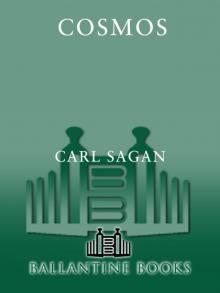 Cosmos
Cosmos Murmurs of Earth
Murmurs of Earth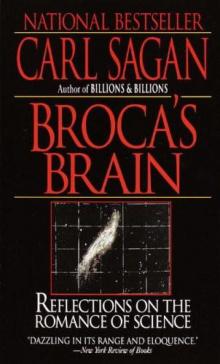 Broca's Brain
Broca's Brain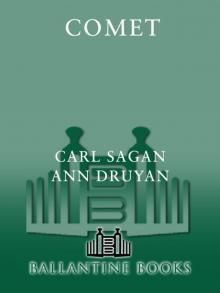 Comet
Comet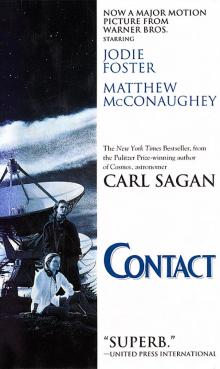 Contact
Contact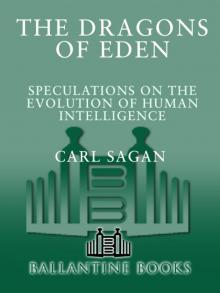 Dragons of Eden
Dragons of Eden Cosmic Connection
Cosmic Connection Shadows of Forgotten Ancestors
Shadows of Forgotten Ancestors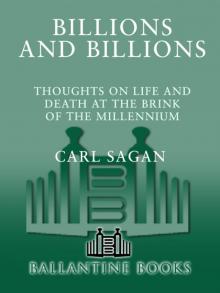 Billions & Billions
Billions & Billions Comet, Revised
Comet, Revised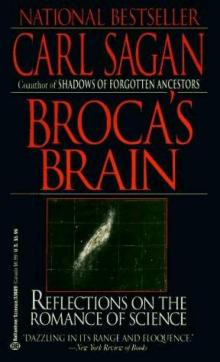 Broca's Brain: The Romance of Science
Broca's Brain: The Romance of Science The Varieties of Scientific Experience: A Personal View of the Search for God
The Varieties of Scientific Experience: A Personal View of the Search for God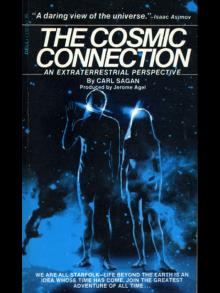 The Cosmic Connection
The Cosmic Connection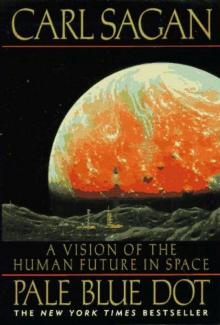 Pale Blue Dot: A Vision of the Human Future in Space
Pale Blue Dot: A Vision of the Human Future in Space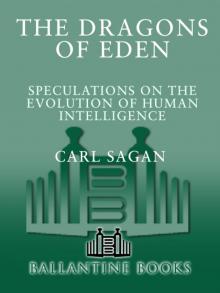 The Dragons of Eden
The Dragons of Eden